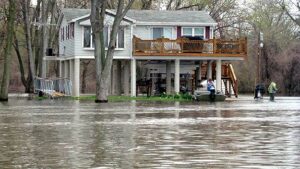You find a house, and you think that it’s absolutely perfect. It has the right amenities, the rooms are gorgeous and spacious enough for the activities they’re meant for. Also, the house is just large enough that your family can comfortably grow into it. Sounds like the perfect house, doesn’t it? Yet, it’s possible that a huge problem might be lurking in the shadows that could threaten to tear this dream house apart: the pipes. Now is the perfect time for a plumbing inspection.

Plumbing is one of those things you could overlook easily when going over a house you’re thinking of buying. However, it is one of the most important aspects of the house that you should consider.
Ask for Help
Before you move into that shiny new home, make sure that you’ve inspected the plumbing, preferably with the help of both the homeowner and a professional plumber that you choose. That way, you can avoid the potential nightmare of turning your perceived heaven into downright hell.
So, what are the things you should do when inspecting the plumbing? For starters, you need to ask the homeowner for their help. They know the house very well and can help you navigate the plumbing easily. Moreover, it should be a test to see if they’ll give you access to the house’s plumbing. If they don’t, then you should take that as a bad omen. You should also ask a plumbing professional like Colepepper Plumbing, San Diego, to accompany you to do the inspection.
Take a flashlight with you and wear some overalls or clothes you don’t mind ruining. Also, don’t forget to wear a decent pair of rubber gloves. Here are some of the things you should go over as you explore the house’s plumbing.
The Water Meter
The first thing you should locate in the house is the water meter. Make sure the shut-off valve is working as it should. It is typically located beneath the kitchen sink but can be located anywhere, which is why you should enlist the help of the homeowner. Try triggering the valve and then making sure all of the faucets in the house are dry and do not dispense water. Now turn it on again and make sure that the faucets work as expected.
The Water Heater
Inspect the water heater for its condition, age, capacity, and location. A family of four requires a water heater with a capacity of no less than 40 gallons. Check for any buildup of mineral deposits in the water heater. Also, check the connections to ensure too much corrosion has not taken place. If the water heater is too far gone, you might need to negotiate with the seller to have it replaced.
The Piping
Inspect the pipes around the house. Look for signs of serious damage or corrosion. You should also look for signs of lead pipes. Lead is common in older pipes laid before 1986 and is a toxin. If you find lead piping in the house get a plumber to appraise the piping and determine the cost of replacement. Then ask if you can have that deducted from the sale price of the house.
The diameter of the pipe also matters. Pipes closer to the water source should be no less than 0.75 of an inch in diameter while those running throughout the house should be no less than 0.5 of an inch in diameter. Anything too small can cause issues in water flow.
Sewage
Where does wastewater go? Does it go into a septic tank or the municipal’s sewage system? If it goes into a septic tank, you’ll have to inspect it for its capacity and structure. Find out where it is located, its condition, and where it was last serviced by the homeowner.
Check the ground around the home for strong odors or signs of seepage. If there is too much of that, then it means the tank has issues and needs to be repaired or replaced. This can be very expensive, running into thousands of dollars, so don’t neglect to inspect it before you make the purchase.
Weather
The plumbing needs to be made to stand the prevailing weather of the location of the house. If the place experiences extreme winters, the pipes should be winterized. In case of well water is the source, the well should also be protected from the elements. Inspect this with the help of a professional.
Water Dispensing
Run all the faucets and flush all the toilets in the house. Make sure they all work as expected. Check the pipes underneath the faucets to check if they’re leaking. Next, the plumber will want to make sure the toilets are refilled properly after being flushed. Lastly, check the temperature of the water in the showers and the water pressure of the water coming out of them, especially when other water systems in the house are running.
Conclusion
If you inspect the plumbing and identify any issues early enough, you save yourself a lot of money that you could have spent doing repairs and replacements all by yourself. It’s a big task. If you find it hard to do the inspection yourself then make sure you get a professional plumber to do the pre-purchase plumbing inspection and appraisals for you.



